
Virtual training course takes place TONIGHT!
Use code BUILD for 20% off
Virtual training course takes place TONIGHT!
Use code BUILD for 20% offCustom build is a route to creating your own bespoke home, but with some of the work already taken care of. Where self build projects involve sourcing a plot, applying for the relevant permissions to develop it and arranging services and access, the custom building process usually involves multi-plot sites bought and prepared by an enabling company or developer. They key benefit is the enabler secures planning, installs key infrastructure and utilities, and, in some cases, prepares the site with foundations or your bespoke home’s structural shell.
Drawing a clear line between custom and self build can be difficult. Typically, a custom build scheme will follow either a serviced plot approach (utilities, access and planning in place, with foundations to suit your final design included in the sale) or a customisable home model (where you tailor a pre-designed house).
When it comes to self build, one of the biggest challenges is finding a plot that will be straightforward to develop. In comparison, custom build sites aim to remove this hurdle by providing a development-ready plot – but you may find there are differing levels of design control available over the finished property.
So, what do you need to know about the custom build route to a new home? From the benefits to the considerations and associated costs, here’s your complete guide.
| Looking for a plot of land for your self or custom build project? Take a look at PlotBrowser.com to find 1,000s of UK plots and properties, all with outline or full planning permission in place. You can also visit our Serviced Plots Hub to find custom build and serviced plot opportunities. |
Custom build is designed to make the whole self build journey easier and more accessible, whilst de-risking the process of creating a house. “Working with a custom build company can provide a more streamlined route than a pure self build,” says Joe Higginson, director of Hugr Homes. “It’s arguably an easier route to achieving a self-commissioned home. The custom home builder you choose to work with should bring the benefit of experience in construction and development, and they take on board a lot of the work in bringing the dream to reality.”
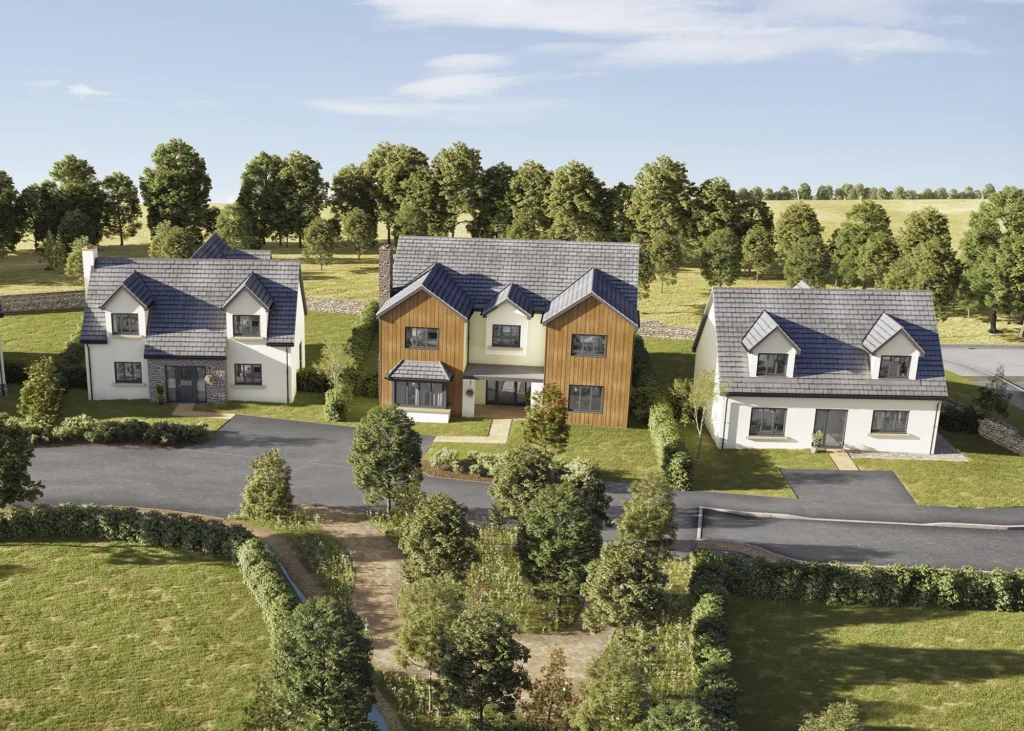
Hugr Homes’ concept drawings show the possibilities of what can be achieved at its Wellbank Park custom build development in the Lake District
Essentially, custom build home plots are ready to go with options ranging from a turnkey approach to a more hands-on method whereby you have more control over design, layout, finishes and build route. As a minimum, you will be able to specify internal configurations, fittings and finishes – but many schemes offer a full bespoke home journey, within the context of a design code pre-approved by the local authority. “While a multi-plot site might have rules about external materials, we have found that a well written design guide will still give buyers the flexibility they want to put their own stamp on the home” says Joe.
The overall size of custom home builder sites will vary, with some having just a few plots while others have dozens or hundreds. For example, Oakwrights’ custom build sites typically house five to 15 homes with varied plot sizes depending on location and land value, while Orchard Farm in Kent has around 122 plots planned.
“Those wanting an isolated plot for a single dwelling may not be interested. However, many realise that they will actually enjoy being part of a community,” says James Buchanan, custom build manager at Oakwrights, who also highlights the future proofing and sustainability benefits of custom built homes that are tailored to you.
Joe agrees: “Energy-efficient products are easier to incorporate as part of construction rather than retrofitting after handover from the speculative builder. Insulation will likely be far better and you can add in solar power with battery storage, air source heat pumps, heat recovery systems, triple glazing and plenty more.”
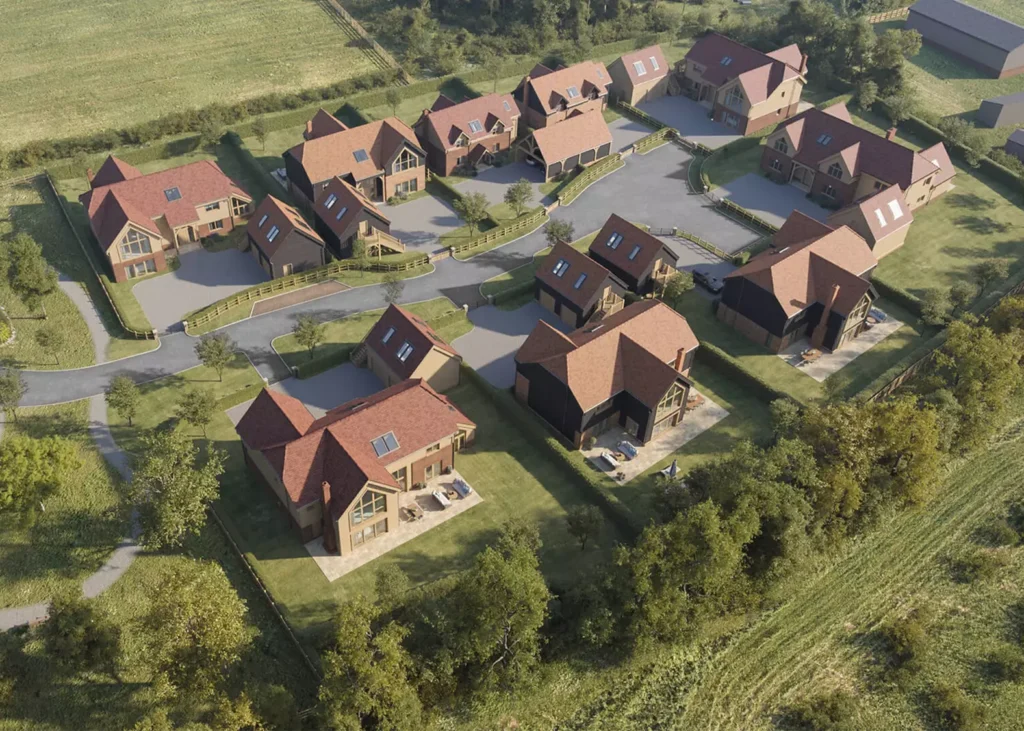
Callum Park in Kent is a custom build scheme by specialist provider Custom Build Homes. The golden brick plots come with pre-designed layouts with the freedom to customise the interiors, and homes are handed over as a painted and plastered house shell for you to commission the remaining trades
According to the National Custom & Self Build Association (NaCSBA)’s Custom & Self Build Market Report 23/24, Energy Performance Certificate (EPC) data shows that self and custom build homes are more eco-friendly than typical mainstream new builds. The report states: “The data demonstrated reduced energy consumption between 8% and 42% lower, with CO2 emissions between 7% and 43% lower for self and custom build homes in the case study areas.” If you’re interested in the custom build homes route, the first steps would be to visit available sites, speak to the developers and sign up to the custom build register via your local authority.
CLOSER LOOK What is the Right to Build & why is it so important?As of 1 April 2016, under the Self Build and Custom Housebuilding Act 2015, Housing and Planning Act 2016 and National Planning Policy Guidance, local authorities in England have been required to keep a register of people looking for land on which to build self commissioned homes, whether custom or self build. They should then cater for this demand in town planning when allocating land for use. Councils have a duty to meet the target number based on the register’s sign ups by granting development for enough serviced plots on a rolling annual basis. This is all commonly referred to as Right to Build. NaCSBA reports that there is low awareness of Registers and says more must be done to promote them. The 23/24 report states: Public awareness remains low, and therefore the numbers on the registers fail to reflect the underlying demand. NaCSBA’s research estimates that, at most, only one in eight people have heard of the Registers, and up to half of all self builders did not join a Register (so their new home counted against another person hoping to build their dream property). |
As you’re typically buying a plot where an enabler has dealt with much of the early-stage risk, the costs may be slightly higher compared to standard self build. You may also face more restriction in terms of the style of build and materials allowed – although this depends on the development.
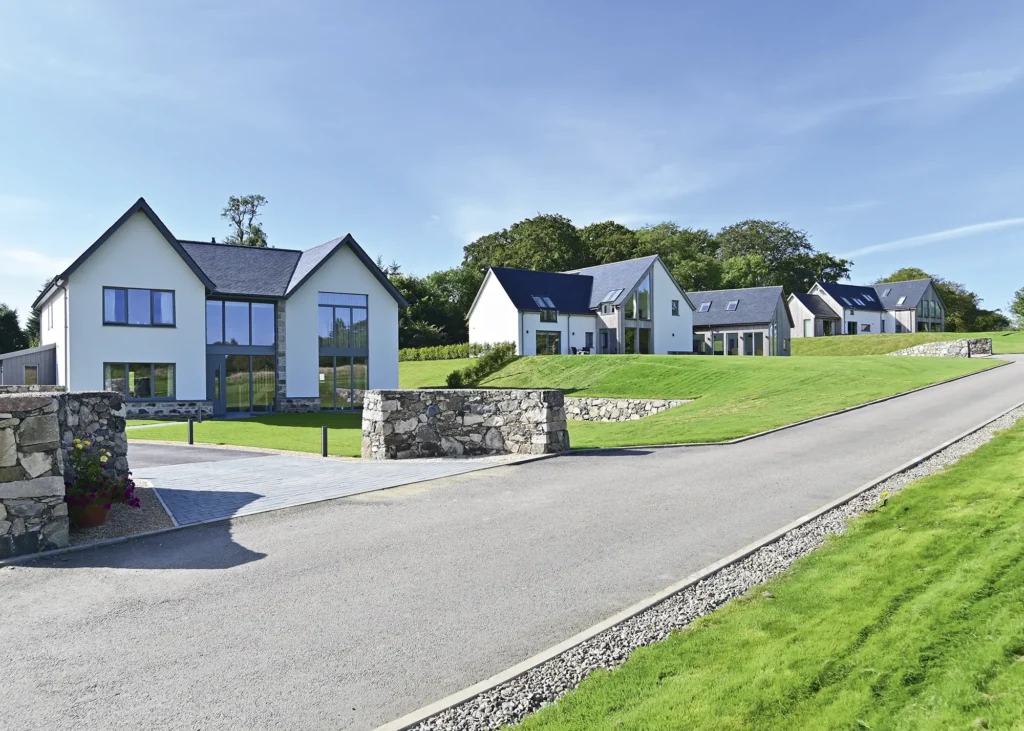
Cairnrowan Custom Homes won the 2023 Build It Award for the Best Custom Build Model for Meldrum House Estate Development located in Aberdeenshire
“Custom build can lead to a truly individual home, although if someone wants a unique property with architectural wow then a standalone plot may be more suited to them,” says Joe. “Our target customer is usually more interested in a brand new home that has the interior layout exactly how they want it, specified to their needs and budget.” Depending on the level of planning achieved, there may be additional timescales while terms are finalised. Nevertheless, you can typically expect a streamlined planning process compared to conventional self build – especially if there’s a clear design code to work within.
Created by the enabling company or developer in line with the planning permission, a serviced plot will come with a plot passport and design code. These usually relate to how big a house you can build on each site, the maximum height and external cladding materials. “Plot passports are created to stipulate the look, feel and quality of a development,” explains James.
“Sites are designed considering factors such as access, privacy, position of the sun and views, so you need to ensure you’re happy with the proposed look before purchasing.” That said, there can be design flexibility – at Graven Hill, some self build plots are offered almost complete freedom, while others come with more rigid requirements.
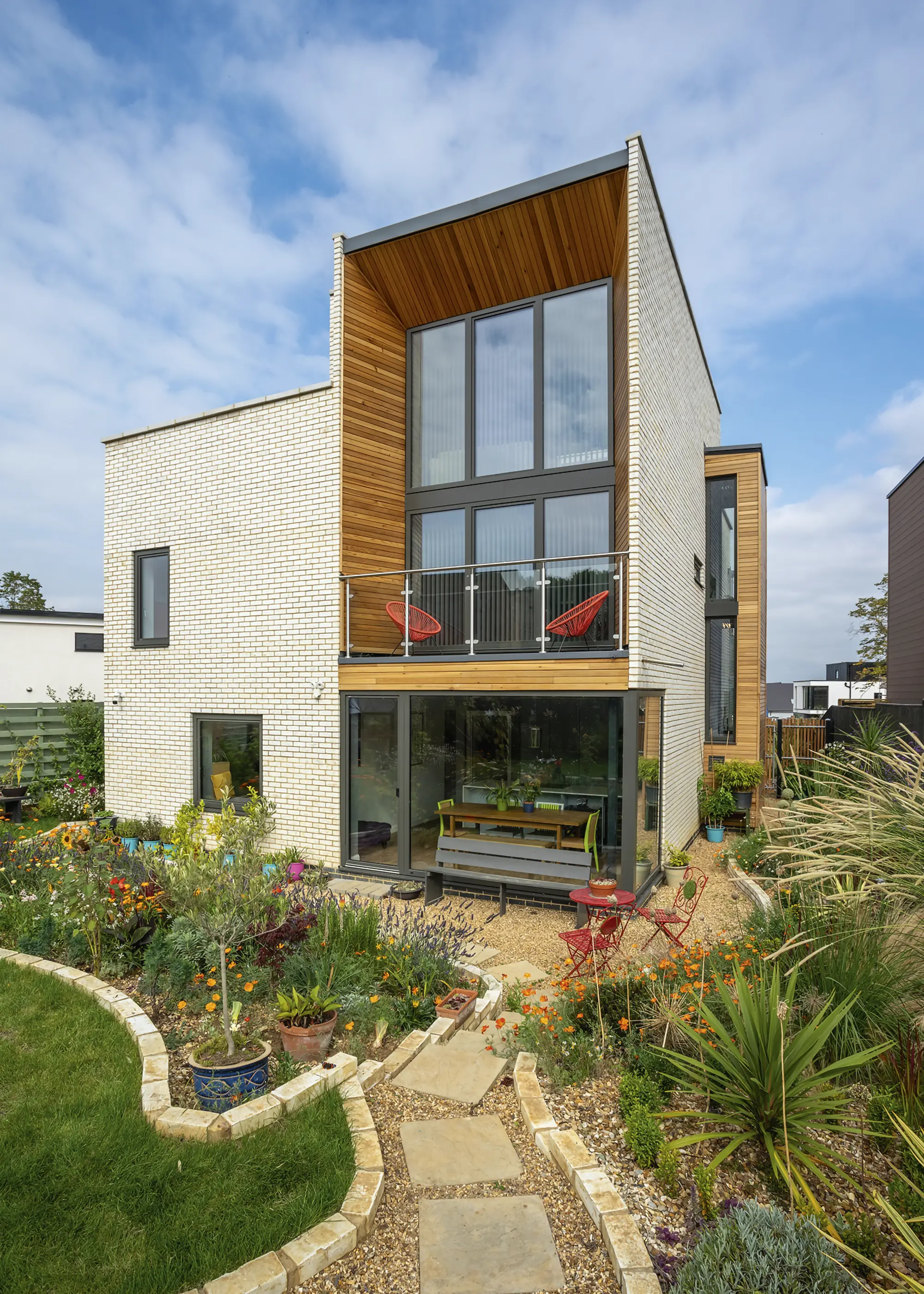
Looking for the opportunity to build their dream home, this couple bought a plot at Graven Hill and enlisted Allan Joyce Architects to help them turn their ideas into a reality. The four-bedroom, three-storey house was constructed using brick and block. The front takes on a minimal, cubic appearance, while the back is opened up with full-height glazing that spans across the three storeys
Each development has a plan to maintain the desired look and feel of the community and to give both the other plot buyers and the landowner confidence as to the finished site. “It’s not just the plot passport though. You need to look at the design guide. This may well detail not just the size of the property that can be built on the plot, but also the materials to be used.
It will show you what your neighbours will be able to build on the adjoining plots, too,” says Joe. Developing your design in accordance with the plot passport or site-wide code is vital; otherwise your may be refused planning and need to submit a new application, adding delay.
CLOSER LOOK Golden Brick explainedBlank self build plots and completed new build homes are both zero-rated for VAT. But a grey area in the rules means that serviced plots don’t benefit from this by default. To get around this, custom build providers have adopted the Golden Brick concept. Where an enabling company or developer provides a plot that includes foundations the damp proof course, it is considered by HMRC to be a residential property (as opposed to a commercial building) so it will be exempt from the standard 20% rate of VAT. If you go for this construction method, the foundations must be completed to your design before the sale is finalised. HMRC guidance states that for Golden Brick to be achieved, a building must be “clearly under construction” – ie work has progressed above foundation level. |
Finding the right level of involvement from the company or developer is key. At one end of the scale, going turnkey puts everything in the hands of the custom build developer, while at the other end, you may prefer to buy a serviced plot and take on the build yourself using a main contractor or by self-managing trades.
In projects like Webbs Meadow, an Oakwrights custom build development in North Herefordshire, owners get a lot of say over the design and how they manage the build (using an Oakwrights structural shell), while in other projects you might have a few choices about the layout and it’s more of a self-finish.
With a landscape-first approach, Orchard Farm in Kent offers serviced plots whereby after purchasing, the customer has say over the design (planning allowing), build route and more.
In general, though, on a custom build development the model used to deliver the serviced plot may involve:
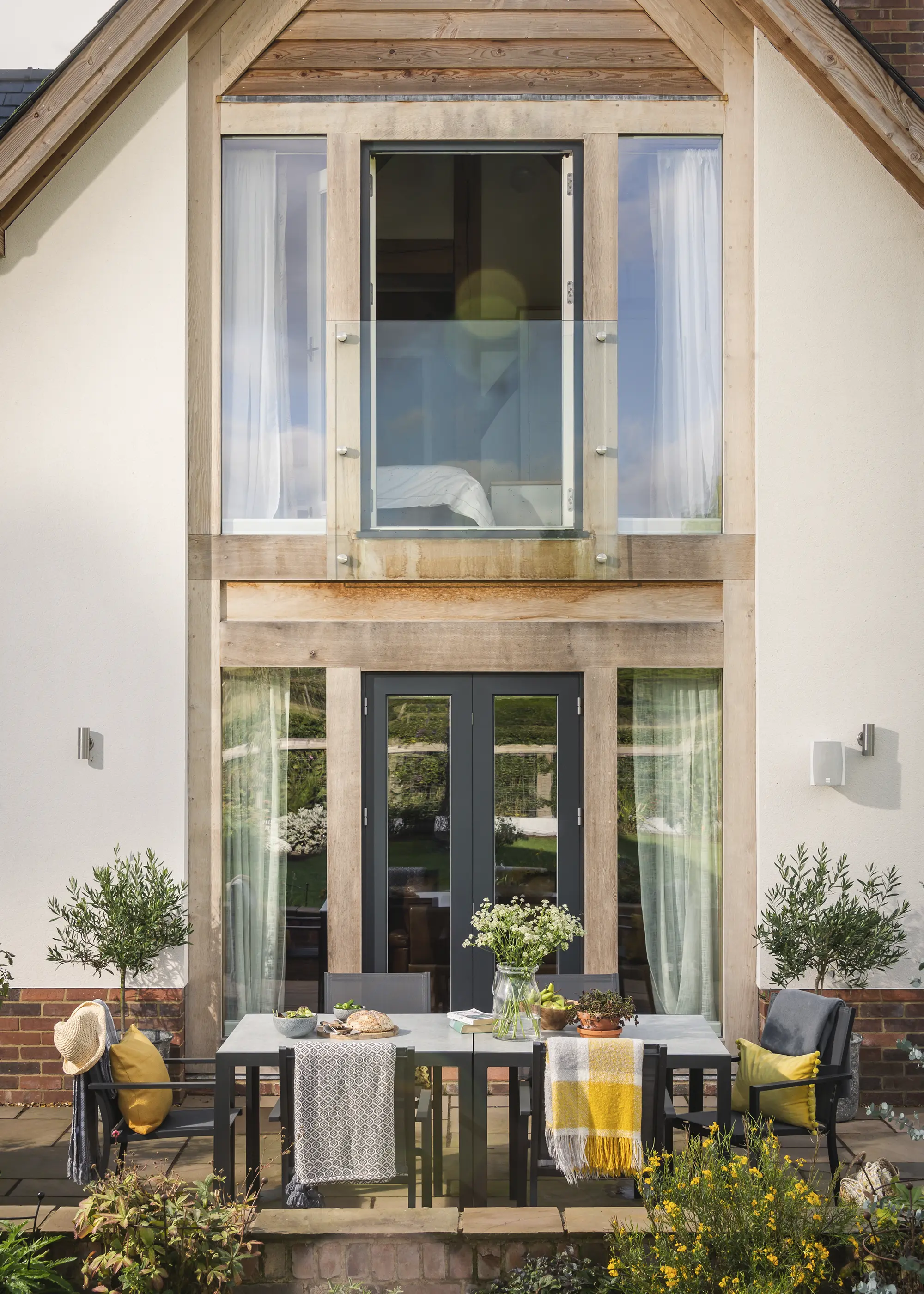
Webbs Meadow residents Simon and Karen Jones built their custom home in collaboration with Oakwrights. They wanted a contemporary interpretation with a slightly different exterior design than outlined in the approved plans, so made a new application that met their needs and the site’s design code
Where you are working with a developer or enabler, there are again different models, varying by site or by your choice. Typically, there will be handover at some point, after which the plot buyer takes control of delivering the rest of the project. Routes include:
Consequently, you should enquire about the delivery options, to check that the routes on offer match your expectations. If getting involved is important to you, look for sites where you commission a home from scratch on the plot, more like self building, but under the guide of the design code and/or plot passport.
The plot price will include planning permission, highway access and utility connections. The cost will also depend on the point at which it is taken on. For example, you may be purchasing a blank but build-ready site; a plot where foundations have been laid; or a site where the build shell has already been constructed and the internals are to be specified.
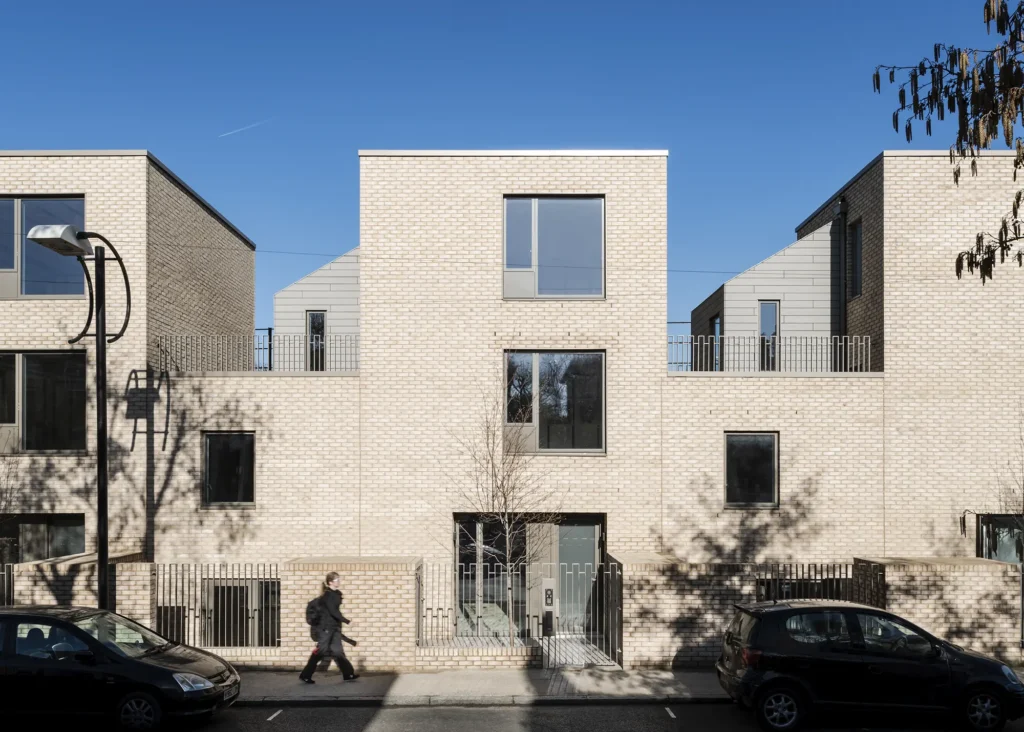
Unboxed Homes and architect Poulsom Middlehurst built a terrace of three houses and four apartments which were sold as customisable shells. Known as the Blenheim Grove project, each homeowner took a different approach to project management
The upfront costs will usually be higher than a self build, for example, as the key elements are in place and there is no uncertainty around what they cost. “The prices really depend on what you are comparing against,” says Gus Zogolovitch, CEO of Unboxed Homes.
“If you were to custom build the exact same thing as you’d find on a speculative development, it will cost you less – but most people don’t want that, so they end up spending more money. It costs more than a self build, but that has higher risks.” To avoid the need to pay VAT at 20%, serviced plots are sold with the foundations already laid. This is known as Golden Brick.
This article has been updated in August 2024. Additional content by Lindsay Blair.
Comments are closed.